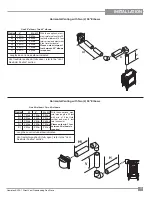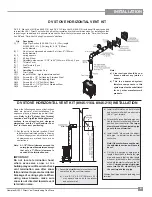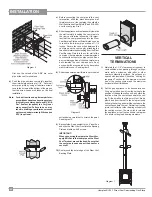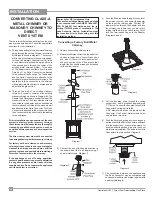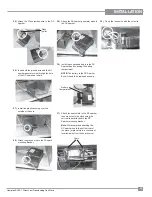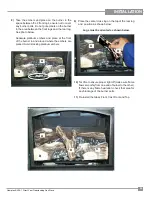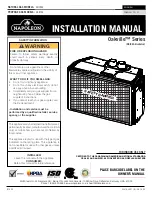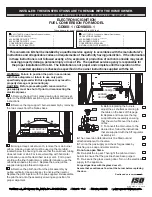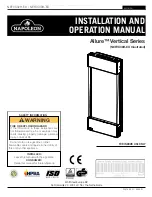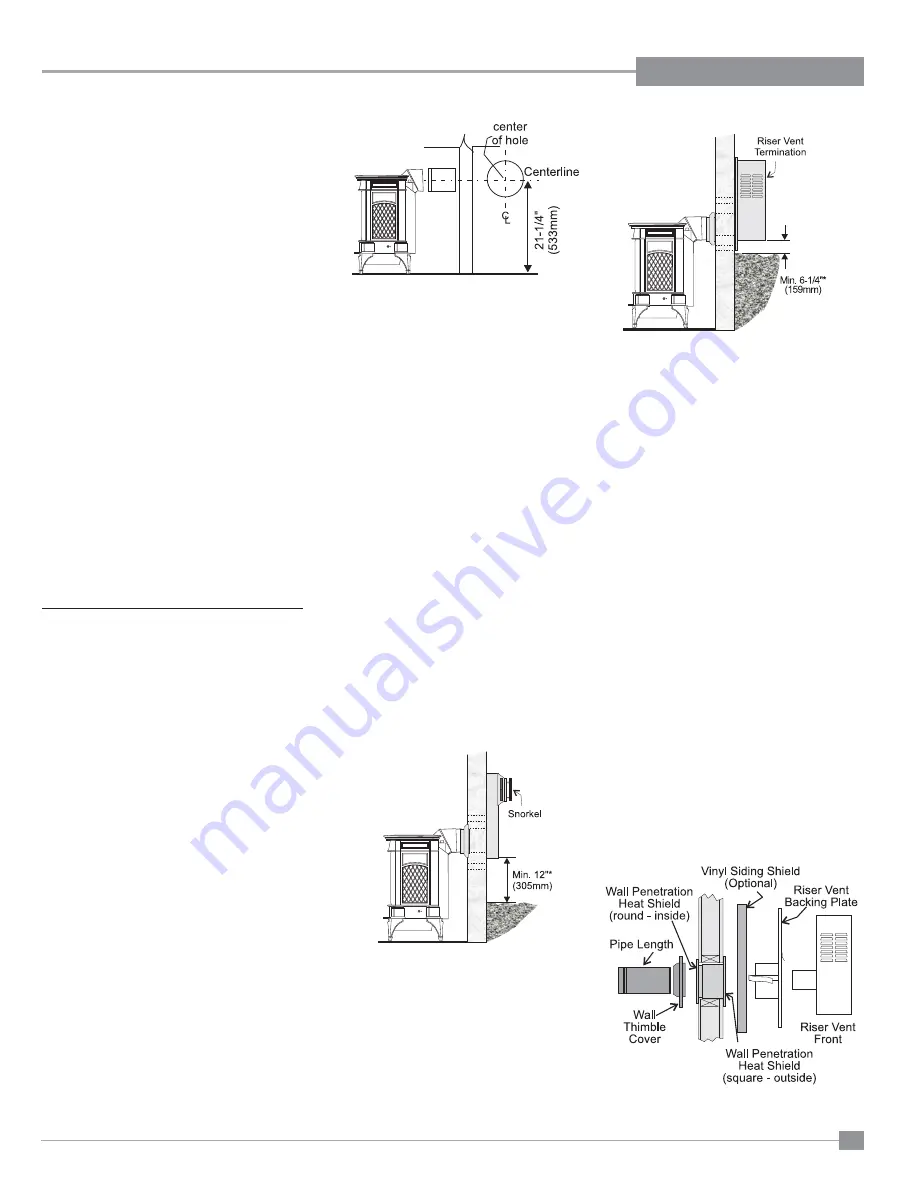
Hampton® H15-1 Direct Vent Freestanding Gas Stove
25
INSTALLATION
Please review your product to make sure you have
everything you need. In the event that you are
missing any part, contact your dealer.
Note: These are the minimum pieces required.
Other parts may be required for your
particular installation. See above for a
list of vent parts.
If installing termination on a siding covered wall, a
vinyl siding standoff or furring strips can be used in
order to ensure that the termination is not recessed
into siding.
The vinyl siding standoff is required for walls with
vinyl siding.
Minimum components for a Dura-Vent Horizon-
tal Installation:
A) Dura-Vent Horizontal Termination Kit
B) Wall Thimble (required for combustible walls)
Minimum components for a Dura-Vent Vertical
Termination:
D) Dura-Vent Vertical Termination Kit. See above
for pipe lengths.
Diagram 2a
HORIZONTAL
TERMINATIONS
1)
Set the unit in its desired location. Check to
determine if wall studs are in the way when the
venting system is attached. If this is the case,
you may want to adjust the location of the unit.
2)
Assemble the desired combination of pipe
and elbow to the appliance adapter with pipe
seams oriented down. Offset the pipe seams
as double seams in one place will cause the
outer pipe to take an oval shape. Kit comes
complete with 18" of straight vent - 6-5/8" dia.
black outer pipe and 4" dia. inner vent.
3)
With the pipe attached to the stove, slide the
stove into its correct location, and mark the
wall for a 9-1/2" (inside dimensions) round
hole. The center of the round hole should line
up with the centerline of the horizontal pipe, as
shown in diagram 1. Cut and frame the 9-1/2
round hole in the exterior wall where the vent
will be terminated. If the wall being penetrated
is constructed of non-combustible material, i.e.
masonry block or concrete, a 7" diameter hole
is acceptable.
a)
The horizontal run of vent should have a
1/4 inch rise for every 1 foot of run towards
the termination. Never allow the vent to run
downward. This could cause high temperatures
and may present the possibility of a fi re.
b)
The location of the horizontal vent termina-
tion on an exterior wall must meet all local
and national building codes, and must not be
blocked or obstructed. Refer to the "Exterior
Vent Terminal Locations" section.
c)
Snorkel Terminations:
For installations requiring a vertical rise on the
exterior of the building, 14-inch and 36-inch tall
Snorkel Terminations as shown in Diagram 2
are available, as well as the standard Riser
Vent. Follow the same installation procedures
as used for standard Horizontal Termination.
NEVER install the snorkel upside down.
Below Grade Snorkel Installation
If the Snorkel Termination must be installed
below grade, i.e. basement application, proper
Diagram 1
*Diagram 2a: As specifi ed in CGA B149 Instal-
lation Code. Local codes or regulations may
require different clearances.
Note:
Diagram 2b
NOTE: For Snorkel terminations in ABOVE
grade installations, follow national or
local code requirements.
drainage must be provided to prevent water
from entering the Snorkel Termination. Do not
attempt to enclose the Snorkel within the wall,
or any other type of enclosure.
4)
Install wall penetration heat shield in the center
of the 9-1/2" round hole and attach with wood
screws. The four wood screws provided should
be replaced with appropriate fasteners for
stucco, brick, concrete, or other types of sid-
ings. Diagram 3.
5)
If installing termination on a siding covered
wall, a vinyl siding standoff or furring strips
must be used to ensure that the termination is
not recessed into the siding. Diagram 3.
6)
Take the Riser Vent terminal and separate the
Backing Plate from the Riser Vent Front by
removing 8 screws as shown in diagram 4.
7)
Install the Backing Plate into the wall penetration
heat shield and attach using 4 screws. Dia. 4.
8)
Connect all pipe sections to unit and install into
wall:
a)
Measure pipe length required and cut to length.
Diagram 3







